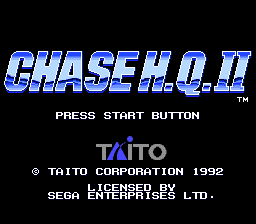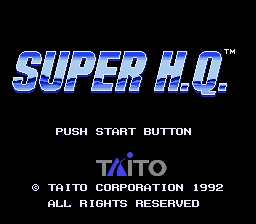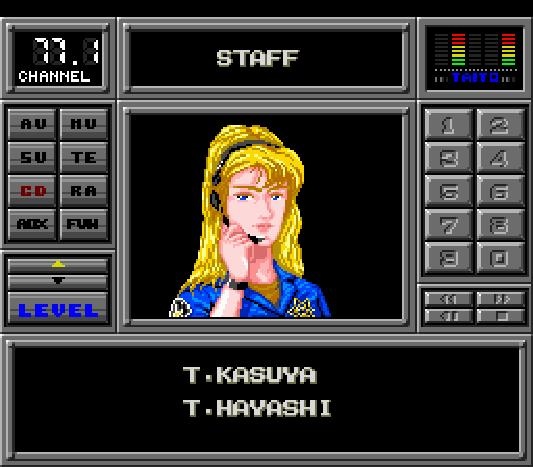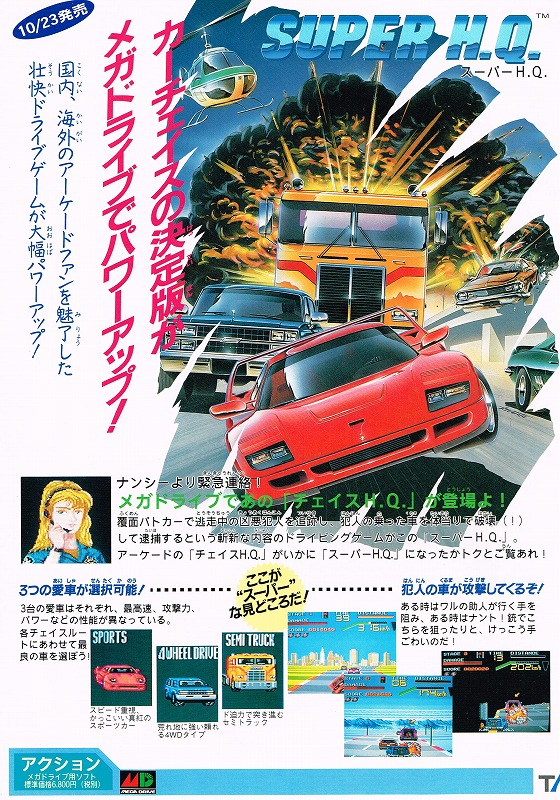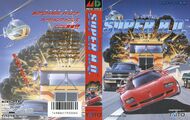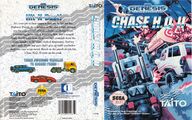Chase H.Q. II
From Sega Retro
| |||||||||||||||
| Chase H.Q. II | |||||||||||||||
|---|---|---|---|---|---|---|---|---|---|---|---|---|---|---|---|
| System(s): Sega Mega Drive | |||||||||||||||
| Publisher: Taito | |||||||||||||||
| Developer: I.T.L | |||||||||||||||
| Sound driver: Taito/Thunder Fox | |||||||||||||||
| Genre: Racing[1] | |||||||||||||||
| Number of players: 1 | |||||||||||||||
|
This short article is in need of work. You can help Sega Retro by adding to it.
Chase H.Q. II, known as Super H.Q. (スーパーH.Q.) in Japan, is a sequel to Chase H.Q. and was developed and published by Taito for the Sega Mega Drive in 1992. It should not be confused with Special Criminal Investigation, which was also sometimes marked as "Chase H.Q. II", nor the "official" 2007 arcade sequel, Chase H.Q. 2.
Contents
Gameplay
Gameplay is very similar to the first game, with the major difference being a choice of three vehicles to chase criminals. By ramming the criminal's car enough times the car will be stopped and the criminal will be arrested. All of this needs to be done within a strict time limit, and while avoiding other cars and obstacles.
Versions
Localised names
| Language | Localised Name | English Translation |
|---|---|---|
| English (US) | Chase H.Q. II | Chase H.Q. II |
| Japanese | スーパーH.Q. | Super H.Q. |
Production credits
Note: The game does not attribute names to individual roles; the credits roll is merely a flat list of names.
- T.Kasuya, T.Hayashi, Kenji Miyagi, K. Kobayashi, Y.Sanagawa, Y.Sugihara, S.Tachihara, Yuji Takasu, Kiyotaka Akaza, K.Omori, K.Yoshioka, T.Kuniyoshi, H.Kusano, S.Igarashi, A.Yoshimi, T.Tada, Watanabe, T.Harada, Kenichi Hiza
Magazine articles
- Main article: Chase H.Q. II/Magazine articles.
Promotional material
also published in:
- Electronic Gaming Monthly (US) #44: "March 1993" (1993-xx-xx)[5]
Physical scans
| Sega Retro Average | ||||||||||||||||||||||||||||||||||||||||||||||||||||||||||||||||||||||||||||||||||||
|---|---|---|---|---|---|---|---|---|---|---|---|---|---|---|---|---|---|---|---|---|---|---|---|---|---|---|---|---|---|---|---|---|---|---|---|---|---|---|---|---|---|---|---|---|---|---|---|---|---|---|---|---|---|---|---|---|---|---|---|---|---|---|---|---|---|---|---|---|---|---|---|---|---|---|---|---|---|---|---|---|---|---|---|---|
|
| 54 | |
|---|---|
| Based on 16 reviews | |
Technical information
- Main article: Chase H.Q. II/Technical information.
References
- ↑ 1.0 1.1 https://sega.jp/history/hard/megadrive/software_l.html (Wayback Machine: 2020-07-02 23:21)
- ↑ File:SuperHQ MD JP Flyer.jpg
- ↑ Sega Visions, "February/March 1993" (US; 199x-xx-xx), page 100
- ↑ File:Chase HQ II MD credits.pdf
- ↑ Electronic Gaming Monthly, "March 1993" (US; 1993-xx-xx), page 95
- ↑ 1700 igr dlya Sega, "" (RU; 2001-xx-xx), page 47
- ↑ Beep! MegaDrive, "October 1992" (JP; 1992-09-08), page 22
- ↑ Consoles +, "Septembre 1992" (FR; 1992-0x-xx), page 58
- ↑ Cool Gamer, "9" (RU; 2002-10-13), page 49
- ↑ Electronic Gaming Monthly, "October 1993" (US; 1993-xx-xx), page 42
- ↑ GamePro, "June 1993" (US; 1993-xx-xx), page 58
- ↑ Hippon Super, "October 1992" (JP; 1992-09-04), page 47
- ↑ Joypad, "Juin 1993" (FR; 1993-0x-xx), page 72
- ↑ Sega Mega Drive Advanced Gaming, "January 1993" (UK; 199x-xx-xx), page 60
- ↑ Mega, "January 1993" (UK; 1992-12-17), page 62
- ↑ Marukatsu Mega Drive, "November 1992" (JP; 1992-10-xx), page 108
- ↑ Sega Power, "February 1993" (UK; 1993-01-07), page 40
- ↑ Sega Pro, "February 1993" (UK; 1993-01-14), page 54
- ↑ Sega Pro, "April 1993" (UK; 1993-03-11), page 68
- ↑ Sega Saturn Magazine, "September 1995" (JP; 1995-08-08), page 87
- ↑ Tricks 16 bit, "Tricks Sega Gold 800 igr" (RU; 1998-03-20), page 10
| Chase H.Q. II | |
|---|---|
|
Main page | Comparisons | Hidden content | Magazine articles | Video coverage | Reception | Region coding | Technical information | Bootlegs | |
| Games in the Chase H.Q. series for Sega systems | |
|---|---|
| Chase H.Q. (1990) | Chase H.Q. II (1992) | Special Criminal Investigation (1992) | Taito Chase H.Q. Plus S.C.I. (1996) | |
